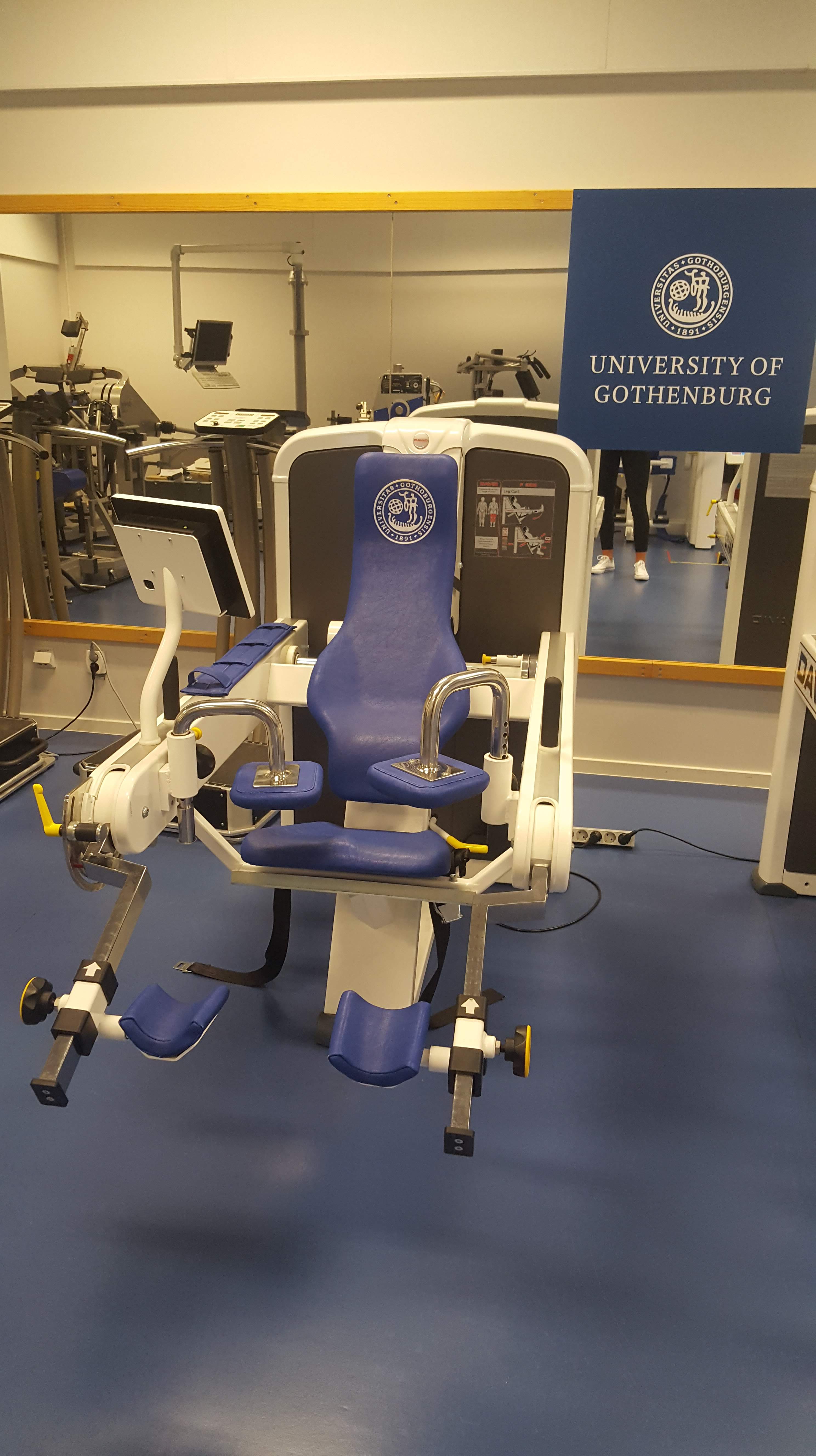March was possibly one of the busiest months in the calendar in terms of lab work and testing. With over 50 athletes being tested in five different disciplines including a body composition scan, mobility screening, biomechanical analysis, physiological tests and multiple strength tests. The testing period was very intense with some early starts and later finishes so that all the tests within the schedule were completed successfully. The outcome of the testing period was to provide extra data as part of a large long-term study relating to injury occurrence and reasoning in elite track and field athletes.
Conducting lab tests on athletes
My role was predominantly working in both the physiology lab and strength lab as test leader for isometric strength tests, threshold tests and V02 Max tests, where the athlete must work until exhaustion. Having previously conducted multiple isometric strength tests earlier this year during the last testing period I was more than comfortable talking through the 6 different movements in the 6 different machines that the athlete must complete. It was nice to be able to talk with the athletes about how their winter season had been in terms of both competition, training and any injury setbacks and whether they were expecting an improvement in their test scores from the last period.
A few of the athletes being tested had also recently competed at the European indoor athletic Championships that were held in Glasgow, so their performance level and motivation was as expected very high. As full-time professional athletes they were very driven to see that their weeks of hard work and training had positively impacted their test results. The athletes ranged from female middle-long distance runners who were 1.55m and under 50kg up to male shot putters who were over 2m and 140kg meaning the machine set up and results both varied massively.

Isometric Hamstring strength testing machine.
My responsibilities in the physiology lab
All the athletes who competed in running events that were 400m and upwards also completed the tests in the physiology lab. Initially when I was told I would be alone in the lab and in charge of these tests it was quite a daunting thought as it was a lot of responsibility with a lot of key processes to remember. If even one step of the equipment set up and test protocol wasn’t completed correctly then the test results would be invalid and useless to the athlete who as an elite athlete had very high expectations and therefore would be very disappointed if this was the case. In many cases the athlete’s coach was also watching over the test procedure. However, after spending time in the lab practising the equipment set up and familiarising myself with the test routine the whole process became significantly more comfortable and when it came around to testing my first elite athlete it was an enjoyable experience and thankfully everything went smoothly. It was very interesting to see the differences between individuals perceived effort, blood lactate and heart rate during the tests. Just like with all competitive athletes though the main fascination was with the VO2 max score the athlete achieved. This is the maximum amount of oxygen a person can utilize during intense exercise.

Equipment setup for the conduction of a running based threshold and VO2 Max test.
The impressive results from the athletes’ testing
The highest ever recorded VO2 max comes from a Norwegian cyclist at 97.5ml/kg/min and some of the scores of the athletes I tested exceeded 80ml/kg/min, which is very impressive! When conducting the test, you get a real appreciation for physical capacity the trained human body holds with many of the athletes making running 21kmph for a prolonged period look comfortable!
Despite being a busy month, I have really enjoyed being involved in such an interesting and intense testing period. It has prompted many discussions and debates among the other test leaders regarding the reliability and validity of these tests and how they could be improved in the future.
